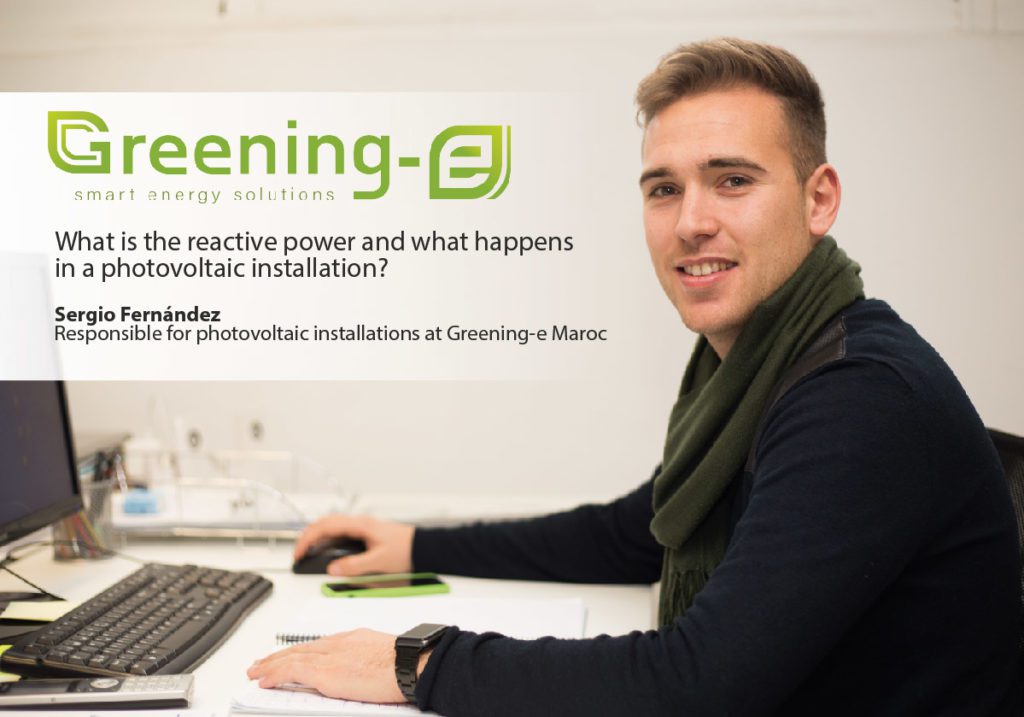Our colleague Sergio Fernández, from our delegation in Morocco, describes the effects of the reactive power in a photovoltaic installation.
Generating reactive power in energy systems is usually one of the biggest puzzles of an industrial installation for energy managers and their operators.
Indeed, it is linked to the dysfunction of the installation, as well as to possible sanctions on the part of the energy supply company.
Let’s start by refreshing the theoretical concepts related to energy:
In the power triangle, there is the active power, the reactive power and the apparent power. The active power, (P), is the power capable of doing useful work, that is to say a good power. The reactive (Q) does not produce useful work, but generates electric and magnetic fields which can be harmful. The apparent power (S) is the total power, resulting from the addition of the active and reactive powers. The difference between these vectors generates an angle called phi. The cosine of this angle is called the power factor and is normally calculated as the ratio of active power to apparent power.
This value makes it possible to quantify the use of the active power compared to the apparent power and can take values going from -1 to 1. The closer the power factor to 1, the better.
The apparent power is measured in volt-ampers (VA), the active power in watts (W) and the reactive power in reactive volts (VAR).

When the power is consumed for a certain time, it becomes energy. The energy of the active power is the watt-hour (Wh), i.e. the amount of energy consumed during one hour.
Since the unit of the preceding powers VA, VAR or W is a small unit, we add the prefix “kilo” (k) which multiplies by thousand and this is more familiar today. Likewise for the prefixes mega (M) or giga (G). Increasingly common in this sector: “Installation of two peak megawatts (2 MWp) and production of three point seven gigawatt hours per year (3.7 GWh)”.
The above is the theoretical part. The reactive power is generally known as bad energy which appears when we have machines and motors. We say that the reactive power is bad because it does not generate efficient work, but it exists when there are coils and they must be supplied with energy.
What happens when a customer asks us to design a photovoltaic installation?
Naturally, our first and greatest goal is to generate energy and money savings for our client. To do this, we have set ourselves the main objective of reducing active energy consumption (kWh). But how does the concept of “others” influence? This bill concept, so common in industrial installations where inductive and capacitive loads are so common, and which is also added to our customer’s bill, being increased by the reactive energy generated.
What can we do to remedy this?
We must take into account that the inverter normally produces active power because the cos of phi of the power that the inverter gives us is practically always 1. In other words, in the solar field, only active power is generated (and with a wave of sufficient quality, by the way). The most recommended solution is to complete our installation with a capacitor bank which in most cases has a return on investment of one to two years. In this way, we reduce the active power with our photovoltaic installation and the reactive power with the capacitor bank generating capacitive energy (currently not penalizing on our bill).
What will happen in the future?
From November onwards, the following elements must be taken into account: electricity suppliers will start charging us for capacitive reactive energy. What does this mean? Normally, the capacitor bank was oversized because we had no penalty for capacitive reactive energy. Well, from November onwards there will also be a penalty for the latter. Therefore, the design of the capacitor bank will now need to be more precise.

